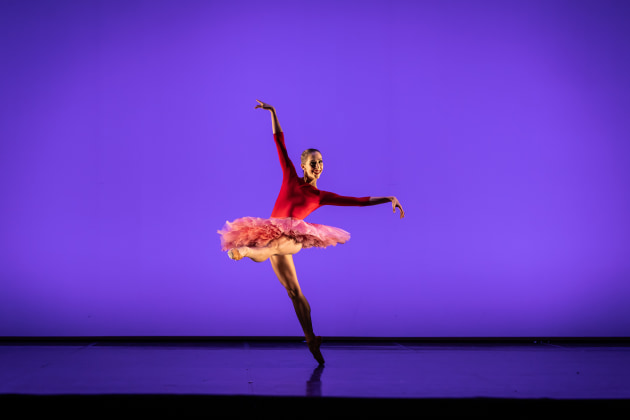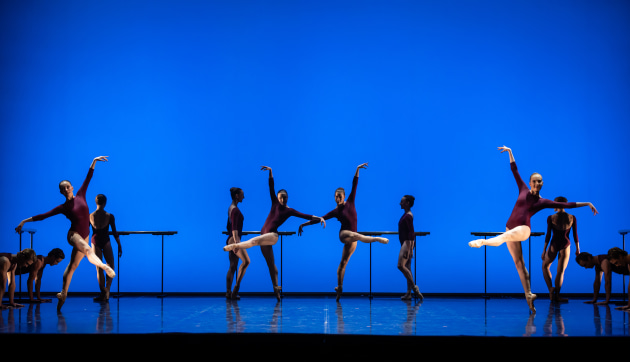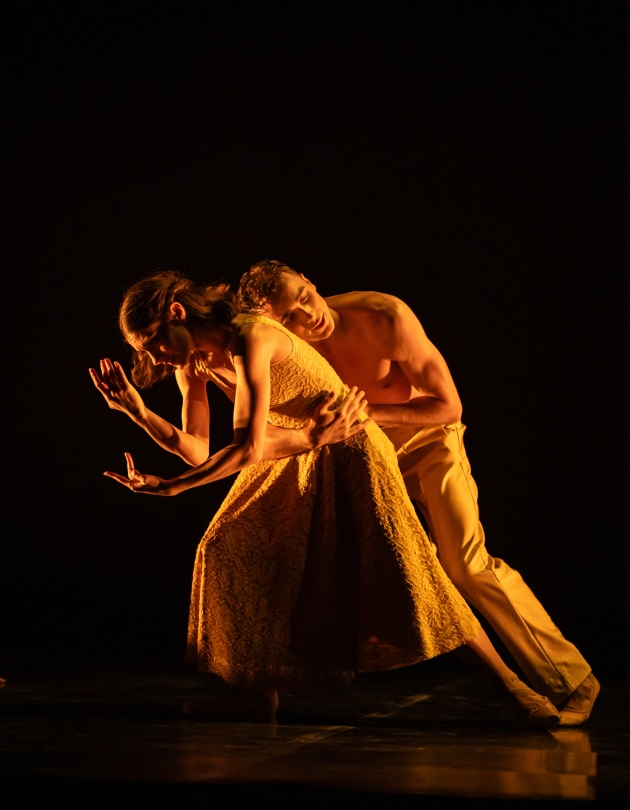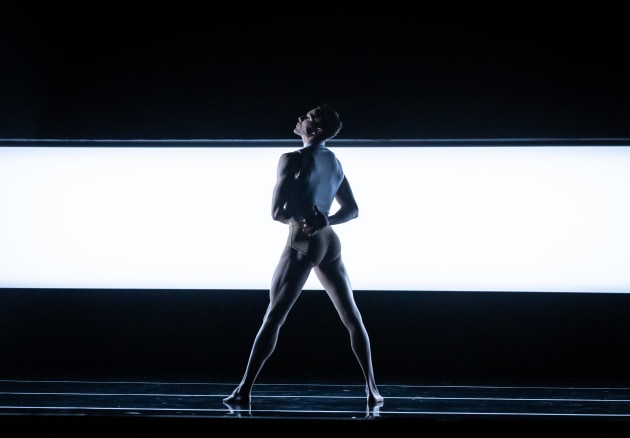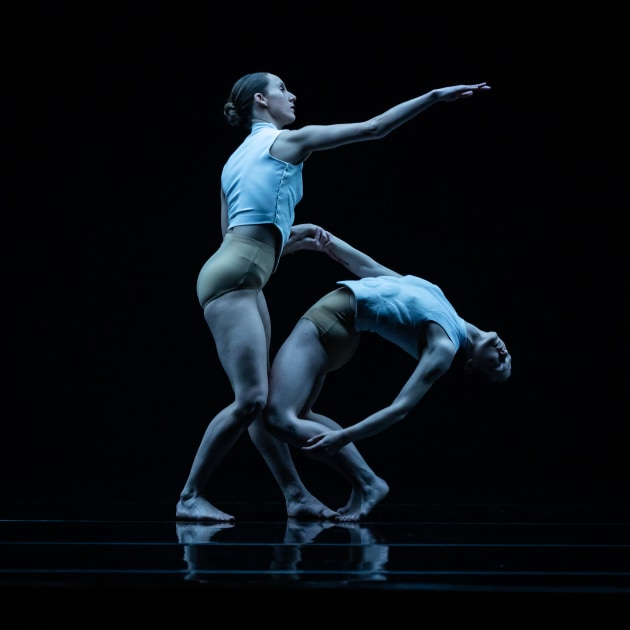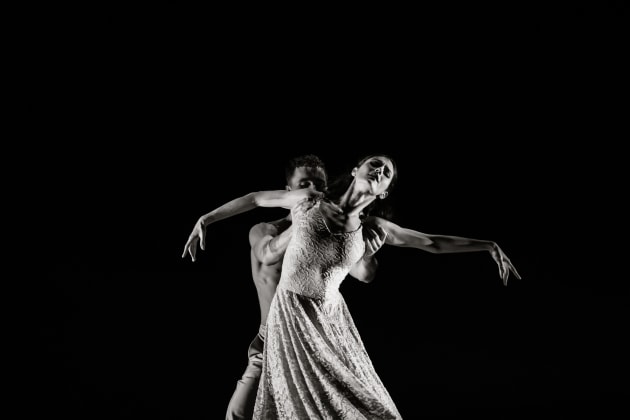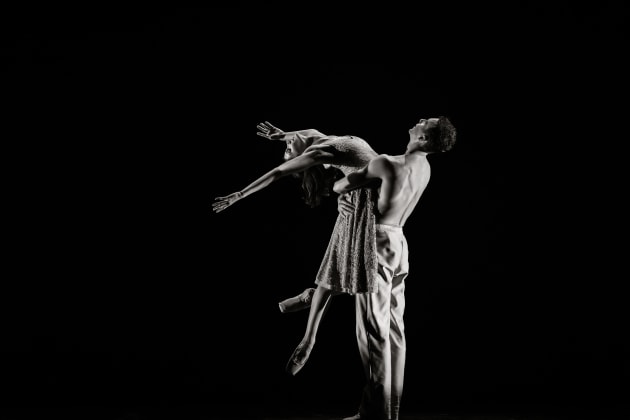Queensland Ballet
Triple Bill – Lister/Weir/Horsman
Playhouse, QPAC
June 27
It has been a challenging few months for Queensland Ballet. This year was supposed to see a reset for the company, welcoming Ivan Gil-Ortega as Artistic Director after the sudden departure of Leanne Benjamin mid 2024, with a celebratory season of Romeo and Juliet to kick off the year’s season. Sadly, news of fiscal constraints and a company restructure were to follow, with both artists and general staff bearing the brunt of cuts. A net loss of 8 dancers is not critical, but with many of these coming from the senior ranks, it does mean that there is not the same depth in the company to draw on for this triple bill.
The world premiere of Jack Lister’s Gemini opened the program. Described in notes as a subterranean world, harnessing both the earthly and the divine, according to Lister this cinematic work for 22 dancers leaves room in the movement for the audience to interpret or feel as they want.
In a black setting, narrow white parallel lines run the width of the stage floor while a large, suspended rectangle of white light hovers overhead upstage. Lighting by Alexander Berlage floods the stage at different times in various bold colours, while an effective costume design by Zoe Griffiths has all dancers similarly barefoot, in gold briefs and fitted white sleeveless tops that incorporate a subtle six-pack moulding on the torso.
Dvořák’s Symphony No. 9 from the New World, underpins Gemini, but reimagined by Louis Frere-Harvey to also incorporate bass, groove and a throbbing beat. Lister choreographically explores this evocative score with strong pulsating movement, generally of a grounded construct, often using wide second position plié, and gestural arm movements, but always delivered with articulate clarity by the dancers.
Although Gemini is an ensemble work where the power of unison and carefully placed moments of stillness are used to an almost poetic effect, a floor-bound opening solo by Taron Geyl of twitching, robotic movement, and Callum Mackie and Heidi Freeman’s later duet of intertwining push and pull, lifts and twists, are effective interjections.
Natalie Weir’s 4Seasons was originally created in 2013 as a collaboration between the then Expressions Dance Company and Singapore Dance Theatre. Inspired by both Vivaldi’s music and Max Richter’s reimagined score, The Four Seasons, it explores four couples at various stages of their lives together.
This is a sublimely expressive work where music, movement, and meaning are inextricably bound together. Weir’s extensive use of canon as a choreographic device never feels contrived, the movement always flowing in perfect synchronicity with the music.
Ten couples create a landscape of movement from which each of the ‘season’ couples in turn emerge. The opening Spring duet with Chiara Gonzalez and Joshua Ostermann was an exquisite highlight – the fresh hopes of young love expressed with languid lifts that tracked fluidly along the diagonal.
Dynamically inventive lifts also made it a stormy Summer with Heidi Freeman and D’Arcy Brazier, while Georgia Swan and Edison Manuel captured the fragile longing of Autumn. Yanela Piñera and Vito Bernasconi’s poignant Winter duet was a gentler evocation of the wisdom and acceptance of time passing.
The masterful manipulation of bodies in each of these duets, while casting the classical canon on its ears, created fresh beauty and meaning with each new choreographic invention.
Greg Horsman’s A Rhapsody in Motion premiered in 2022 as part of QB’s annual Bespoke season, also celebrating the newly opened Thomas Dixon Centre’s Talbot Theatre. Horsman thematically divides Rachmaninov’s wonderfully danceable Rhapsody on a Theme of Paganini into three movements clearly exploring a dancer’s rite of passage from the mastery of technique at the barre to the development of artistry.
In a coincidental nod to Les Études, at curtain up we see twelve couples (including four soloist couples), set across the stage, each beside a small barre, which they later manipulate over and around themselves with crisp sometimes almost acrobatic movement. The rigour and repetition of barre is followed by a lyrical pas de huit for the soloist couples, and as the work progresses the women’s close-fitting leotards of differing reds are softened by the addition of skirts of chiffon, then half-tutus.
Horsman’s movement adds a visual dimension to the score, challenging the dancers with its dazzling complexity and necessity for precision, although the challenge is not always met, with uneven lines and leg heights noticeable early on. However, the soloist couples, Libby-Rose Niederer and Ivan Suradeev, Gonzalez and Frederick Montgomery, and Alison McWhinney and Manuel, all impressed. Neneka Yoshida with Bernasconi also captured the essence of the familiar romantic section of the score in their tender duet, even though physically they’re not that well matched, Bernasconi being almost a head taller than the diminutive Yoshida.
This triple bill is a beautifully balanced program of works that straddles the contemporary, lyrical and classical styles of dance, showcasing the dancers’ command of each. However, the accompanying music – three fabulous scores – should also be recognised as an equal partner. Played live by Camerata under Nigel Gaynor, with piano soloist Roger Cui, how it energised the performance!
-Denise Richardson



